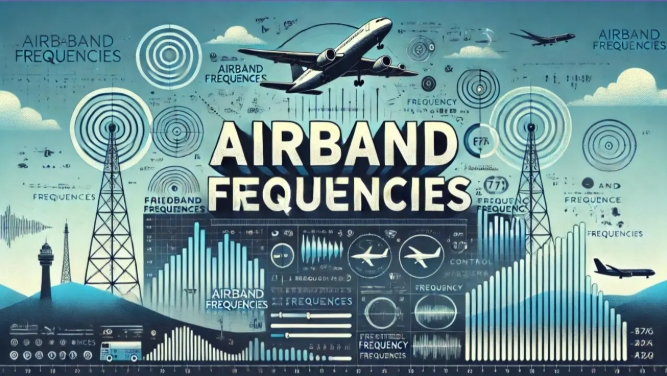What is Air Frequency and Air Radio?
The frequency of the air band typically ranges from 108MHz to 137MHz, covering Very High Frequency (VHF) navigation and communication channels
7/4/20252 min read


The frequency of the air band typically ranges from 108MHz to 137MHz, covering Very High Frequency (VHF) navigation and communication channels. The details are as follows:
VHF Navigation Frequencies: Ranging from 108.00 to 117.95MHz, where 108.00-111.95MHz is used for Instrument Landing System (ILS) localizer and marker beacon frequencies; 112.00-117.95MHz is for Very High Frequency Omnidirectional Range (VOR) and terminal VOR frequencies.
VHF Communication Frequencies: Ranging from 118.00 to 136.975MHz, specifically for air-to-ground and air-to-air communication. For example, 118.00MHz is commonly used for air traffic control by airport towers; 121.50MHz is the international emergency frequency; 122.75MHz is often used for air-to-air communication by general aviation pilots.
For walkie-talkies used on aviation channels, the following special requirements and functional requirements apply:
Frequency Characteristics Requirements: They must strictly operate within the 118.000-136.975MHz band. In China, the channel frequency interval is specified as 25KHz. The signal space field strength must be at least not less than 120DBW/M2, and the protection against adjacent channel signals must be greater than 60DB to ensure the stability and anti-interference capability of communication.
Modulation Mode Requirements: Amplitude Modulation (AM) is typically used because VHF radio waves have small attenuation losses caused by reflection and scattering in the ionosphere, and AM is suitable for voice communication between the ground and air.
Power and Receiving Sensitivity Requirements: Aviation walkie-talkies have various power levels. 5-10W is medium power, 1-5W is low power, 25W is high power, and 50W is extra-high power. Due to the high flight altitude of aircraft, walkie-talkies need to have very high receiving sensitivity. The general communication distance should be more than 200 kilometers. If the transmitting power is 50W, the operating distance at an altitude of 10,000 meters can reach 300-350 kilometers.
Reliability Requirements: They must be able to work normally in harsh environments, such as stable operation under extreme conditions like sudden temperature changes, to ensure the safety and reliability of aviation communication, which is a key requirement for aviation equipment.
Operational Convenience Requirements: On-board walkie-talkies usually have large display characters and good backlighting for easy observation under different lighting conditions. They have fewer surface buttons and knobs than conventional vehicle-mounted walkie-talkies, and the required control functions can be completed through a small number of knobs and control buttons, facilitating quick operation by pilots during flight.
Functional Simplicity Requirements: They mainly ensure basic call functions and usually do not have too many redundant functions, focusing on the core needs of aviation communication to reduce operational complexity and failure points.
Anti-Interference Requirements: Aviation communication is very sensitive to interference. Walkie-talkies need to have good anti-interference capabilities to avoid communication interruptions or noise caused by external signal interference, ensuring clear and accurate communication.
Chenghui International Park ,Nan 'an,Quanzhou ,Fujian ,China 362300.
Your Secure Communication Is Our Mission


allyxubin
ally@akl-tech.com anson@akl-tech.com
© 2024-2025 All rights reserved. AKL Technology Co.,Limited All Rights Reserved.
POC Radio
DMR Radio
Analog Radio
Radio Accessories
86-15859775920
